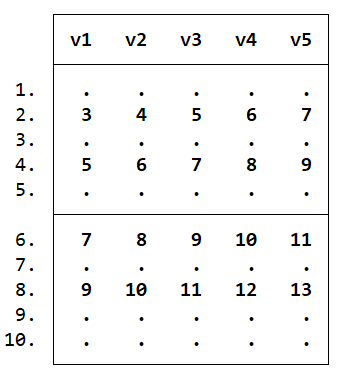Chapter6——STATA流程语句
Chapter6——STATA流程语句
stata中的循环语句有三类:while循环、forvalues循环、foreach循环
0. 循环语句while
用循环语句编写程序,依次列出 1,2,3,4,5
capture drop count5
program count5
local i=1 //先将宏名为i的宏值设置为1
while `i'<=5{ //判断如果宏值`i'不大于5,就执行{}中的命令,否则跳开
display `i' //当执行时显示的宏值`i'
local i=`i'+1 //重新设定宏名为i的宏值,令其等于`i'+1
}
end
count5 //运行出现结果代码解释:当`i'最开始设定为1,但是因为1小于5,因此执行{}中的代码。即是显示i的内容。然后循环到6,不再小于等于5,跳出循环{},执行end
但是其实用Python来写的话,会更加好理解
i=1 #local i=1
while i<=5: #while i<=5:
print(i) #display `i'
i=i+1 #local i=`i'+1
#output:1 2 3 4 51. 循环语句forvalues
- 用
forvalues做循环时,其命令格式
forvalues lname = range {
Stata commands referring to `lname'
}
/*where range is
#1(#d)#2 meaning #1 to #2 in steps of #d 循环从#1到#2,步长为d
#1/#2 meaning #1 to #2 in steps of 1 循环从#1到#2,步长为1
#1 #t to #2 meaning #1 to #2 in steps of #t - #1 循环从#1到#2,步长为#t-#1
#1 #t : #2 meaning #1 to #2 in steps of #t - #1 循环从#1到#2,步长为#t-#1 */- 利用
forvalues进行循环遍历展示从1到5
forvalues i=1/5{ //1/5是指5个数字:1,2,3,4,5
display `i'
}
*output:1 2 3 4 5
forvalues i=4(-0.2)0{ //4(-0.2)0指的是初始值为4,步长为-0.2,终值是0的所有数
display `i'
}- 用
forvalues编写程序,计算1+2+3+4+5+……+100的总和
*使用while循环来编写程序
capture program drop sum100
program sum100
local d=1
local s=0
while `d'<=100{
local s=`s'+`d'
local d=`d'+1
}
display `s'
end
sum100
*使用forvalues循环来编写程序
scalar s=0
forvalues i=1/100{
scalar s=s+`i'
}
display s2. 循环语句foreach
- 用
foreach做循环时,其命令格式为
foreach lname {in|of listtype} list {
commands referring to `lname'
}
/*Allowed are
foreach lname in any_list {
foreach lname of local lmacname {
foreach lname of global gmacname {
foreach lname of varlist varlist {
foreach lname of newlist newvarlist {
foreach lname of numlist numlist { */- (按变量循环)将wage1数据集的变量从nonwhite 到servocc
分别使用
tab求频数分布。
use http://fmwww.bc.edu/ec-p/data/wooldridge/wage1, clear
tab nonwhite
tab female //需要一个个tab来输入
*使用foreach可以通过遍历循环来完成,会方便很多
foreach v of varlist nonwhite-servocc{
tab `v'
}- 将student.dta,economy.dta,math.dta的数据纵向拼接起来
use student,clear
foreach file in economy math{
append using "`file'"
}- (按项循环)逐行显示粮食(rice wheat flax maize)和货币(Dollar Lira Pound RMB)
local grains "rice wheat flax maize" //先定义所有粮食为一个新的局域暂元
foreach x of local grains{
display "`x'"
}
global money "dollar lira pound rmb" //先定义所有的货币为一个新全域的暂元
foreach y of global money{
display "`y'"
}- (生成新变量)生成五个新变量 b1,b2,b3,b4,b5,每个变量都是均匀分布随机数
clear
set obs 10 //设置10个观察值
foreach v of newlist b1-b5{ //定义b1-b5五个新的变量
gen `v'=uniform() //给5个变量的观察值分别赋值均匀分布随机数
}
//注意要区分好观察值obs和变量var的不同- (按数值循环)逐行显示 1 2 3 4 8 105
foreach num of numlist 1/4 8 105{
di `num'
}3. 嵌套循环
- 生成 5 个变量,10 个观察值,使得第 i 个变量的第 j 个观察值等于i+j
clear
set obs 10
forvalues i=1/5{ //i赋值为1,2,3,4,5
gen v`i'=. //生成一个新的变量v1,v2
forvalues j=2(2)8{
replace v`i'=`i'+`j' in `j'
}
}
l
4. 条件语句
- 简单的条件语句
如果是国产车,则价格降 100 元,如果是进口车,则价格提升 200 元
sysuse auto,clear
gen p1=price-100 if foreign==0
replace p1=price+100 if foreign==1
*也可以用一行代码解决以上两行
gen p2=cond(foreign==0,(price-100),(price+100))- 判断奇偶数
- 采用
mod函数来判别奇偶数,mod(x,y) = x - y*floor(x/y),是x/y的余数,若除后的余数为1,则是偶数
capture program drop odd
program odd
args num
if mod(`num',2) != 1{ //若num/2的余数不等于1,则执行
di"`num' is NOT an odd number"
}
else{
di"`num' IS an odd number"
}
end
odd 1int()取整,不论后面的小数是什么,只取小数点前的数值
capture program drop odd
program odd
args num
if int(`num'/2)!=(`num'-1/2){ //若num/2不等于(num-1)/2
di"`num' is NOT an odd number"
}
else{
di"`num' IS an odd number"
}
end
odd 1- 检验数据文件中是否有某个变量
capture program drop check
program check
capture program variable `i'
if _rc!=0{
di "`i not found'"
exit
}
display "the variable `1' exists."
end
use hb97,clear
check inc
check exp- 循环语句嵌套条件语句
- 求 6-500 之间能同时被 2,3,5 整除的数
forvalues x=6/500{ //先把6-500的数循环遍历
if mod(`x',2)==0 & mod(`x',3)==0 & mod(`x',5)==0{ //在6-500的数中如果是能被2,3,5整除的就执行
di"the ALL common multiple of 2,3,and 5 id `x'"
}
}- 求 6-500 之间能同时被 2,3,5 整除的最小的数
forvalues x=6/500{
if mod(`x',2)==0 & mod(`x',3)==0 & mod(`x',5)==0{
di"the LEAST common multiple of 2,3,and 5 is `x'"
continue,break
}
}